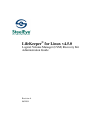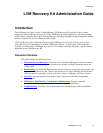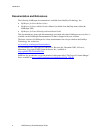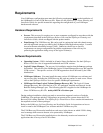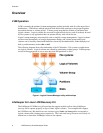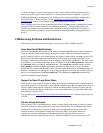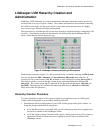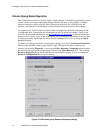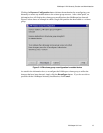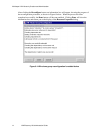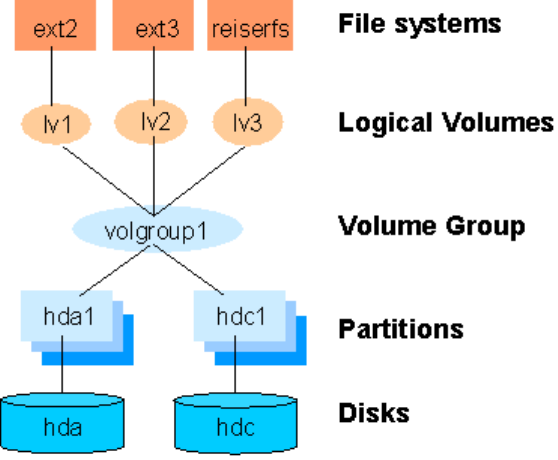
Overview
Overview
LVM Operation
LVM is currently the standard volume management product included with all of the major Linux
distributions. LVM allows multiple physical disks and/or disk partitions to be grouped together
into entities known as volume groups. Volume groups may then be divided or partitioned into
logical volumes. Logical volumes are accessed as regular block devices, and as such may be used
by file systems or any application that can operate directly with a block device.
Logical volume managers are principally used to simplify storage management. Logical volumes
can be resized dynamically as storage requirements change, and volume groups and logical
volumes can be sensibly named with identifiers chosen by the administrator, rather than physical
disk or partition names such as sda or sdc1.
The following diagram shows the relationship of the LVM entities. File systems or applications
use logical volumes. Logical volumes are created by partitioning volume groups. Volume groups
consist of the aggregation of one or more physical disk partitions or disks.
Figure 1: Logical Volume Manager entity relationships
LifeKeeper for Linux LVM Recovery Kit
The LifeKeeper LVM Recovery Kit provides the support needed to allow other LifeKeeper
recovery kits to operate properly on top of Linux logical volumes. To accomplish this support,
the LVM Recovery Kit installs two new resource types: lvmlv and lvmvg which correspond to
logical volumes and volume groups respectively. The lvmlv and lvmvg resources exist solely for
internal use so that other LifeKeeper resources can operate.
6 LVM Recovery Kit Administration Guide



